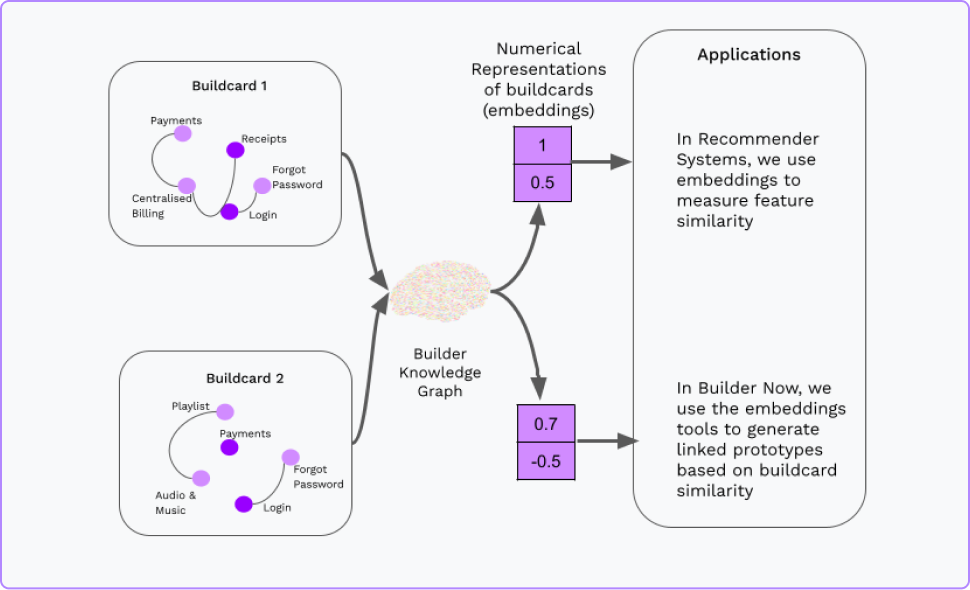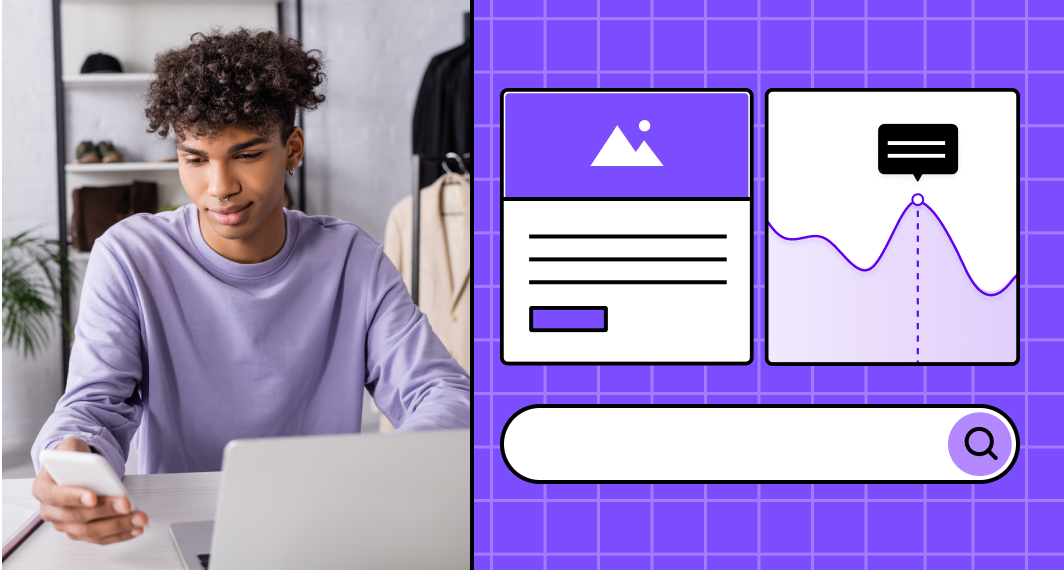What is a knowledge graph?
A knowledge graph is a web of information, helping to organise and retrieve information smartly. This allows your organisational data to work like a brain, making connections across different data points and drawing conclusions in a far more sophisticated way than a traditional database.
Example of a knowledge graph
Imagine a hospital that collects data on patient medical records, treatments, diagnoses, medications and lab results.
Using a knowledge graph, the hospital can create a network that connects different aspects of patient care. For instance, it can link a patient's medical history with their current symptoms, lab test results and prescribed treatments.
With this interconnected data, the hospital can make inferences such as:
- Identifying patterns in patient conditions and treatments to improve diagnosis accuracy
- Recommending personalised treatment plans or interventions tailored to individual patient needs
- Analysing the effectiveness of different treatments or medications based on patient outcomes
What are the components of a knowledge graph?
A knowledge graph has three main components:
- Nodes - these are the building blocks of the graph and represent real-world entities like people, places, objects, situations or concepts; each node holds specific information
- Edges - these are the connections or links between nodes, illustrating the relationships between them; they show how different types of entities are related
- Properties - these are attributes or characteristics assigned to nodes; they provide additional details about each entity in the knowledge graph, enriching the context
In simple terms, nodes are the things, edges are the relationships between things and properties are the details about each thing in a knowledge graph.
How does a knowledge graph work?
Knowledge graphs leverage natural language processing (NLP) in a process known as semantic enrichment. This process constructs a detailed framework of nodes, edges and labels.
As you put data into the knowledge graph, the semantic networks empower the knowledge graphs to identify individual objects and comprehend the intricate relationships between them. This knowledge is then cross-referenced and integrated with datasets sharing relevance and similarity.
For instance, only by comprehending and cross-referencing the data can a knowledge graph tell the difference between Blackberry, the fruit, and Blackberry, the mobile company.
Once the knowledge graph is fully developed, it gains the ability to use question-answering and search query systems effectively. This results in quick and comprehensive responses to your specific queries.
By connecting data points that might not have been apparent before, a knowledge graph empowers you with a deeper understanding of the information landscape, unlocking insights that can drive innovation and informed decision making.
Use cases of knowledge graph
Knowledge graphs are very flexible and can be used across many industries for various use cases. Some of the common uses are 👇
1 - Search engines
Knowledge graphs revolutionise search engines by providing a more sophisticated understanding of complex queries.
Where traditional search engines rely on keyword matching, often delivering results that may not match the user's intent, knowledge graphs make the search process more contextual.
By mapping relationships between entities, the search engine can offer more accurate and relevant results.
2 - Healthcare
In the healthcare sector, knowledge graphs play a pivotal role in decision support systems. These systems leverage the interconnected nature of knowledge graphs to map relationships between symptoms, diseases, treatments and patient histories.
This holistic view enables healthcare professionals to make more informed and timely decisions. For instance, a knowledge graph can highlight potential drug interactions, recommend personalised treatment plans and enhance the overall quality of patient care.
3 - Finance
In finance, institutions can create a comprehensive fraud detection system. Knowledge graphs can analyse patterns and connections between transactions, accounts and entities.
Using them, institutions can detect anomalies, unusual transaction flows and connections between seemingly unrelated activities. This proactive approach enables timely intervention to prevent financial fraud, safeguarding both institutions and their clients.
4 - Entertainment
Knowledge graphs are at the core of the entertainment industry. By understanding user preferences, behaviour and the relationships between various content items, these systems can offer personalised content recommendations.
For example, in a streaming service, a knowledge graph might connect user preferences, viewing history and content attributes to suggest movies or shows that align with the user's interests.
5 - Technology
There are many ways knowledge graphs are being used in the tech industry. One of the prominent use cases is that they can be used to streamline various aspects of the software development lifecycle.
For instance, in app development, they can recommend features, create prototypes, delegate tasks to team members and automate app testing processes. This saves developers time and effort and accelerates the app development process.
What is the Builder Knowledge Graph?
Builder.ai is a composable app builder that leverages the power of artificial intelligence to create applications without the need for coding knowledge.
At Builder.ai, we think of our Builder Knowledge Graph as the brain of our operations because it powers most of our workflows. Under the hood, its primary objective is to fill in the gaps between what makes your idea special and what it’ll need to be special.
The Builder Knowledge Graph contains the entities in our Builder.ai ecosystem—that's everything from features to projects and developers, and it also shows how all these are connected.
How do we use the Builder Knowledge Graph?

We feed the historical data from all the projects we’ve ever done into the Builder Knowledge Graph so that it can do everything from suggesting relevant features to you, generating instant prototypes, working out who should do each task and solving problems before they arise.
Recommend features
When you give us a problem statement by telling us what problem you want your app to solve, we combine natural language processing (NLP) and graph-generated embeddings to recommend some project templates that could power your solution.
You can create a blueprint for your app idea by adding features like a login screen, push notifications or a barcode scanner to your Buildcard™ (a blueprint for your app that includes all your features, the platforms you’re building for, costs and timelines).
The Builder Knowledge Graph uses the template embeddings and feature embeddings it’s learned to give you relevant recommendations for extra features that could improve your app.
Create prototypes
After you’ve built your Buildcard™, the Builder Knowledge Graph uses what it’s learned to spot relevant feature-to-feature connections and automatically create a prototype for a completely new app.
Delegate tasks
The Builder Knowledge Graph lets us split your project into parallel work streams and find the best developers to work on complex tasks.
For every designer or developer we work with, our embeddings work out their expertise level, past experience on similar features and which timezone they’re in.
Allocating work becomes automated based on each person’s merits, removing any bias.
Resolve problems
Lastly, the Builder Knowledge Graph lets us spot problems before they happen. Information from past projects stored in the Builder Knowledge Graph can help determine the probability of your project being delayed.
It can predict the most likely causes of a delay, for instance, if a customer is slow to give feedback, developers are raising more bugs or feature-to-feature interactions are more complex. Then the Builder Knowledge Graph uses this insight to suggest actions that our project managers should take to avoid this delay.
Learn more about Builder Knowledge Graph (BKG) 👈
Get a free app prototype now!
Bring your software to life in under 10 mins. Zero commitments.

 Facebook
Facebook X
X LinkedIn
LinkedIn YouTube
YouTube Instagram
Instagram RSS
RSS


